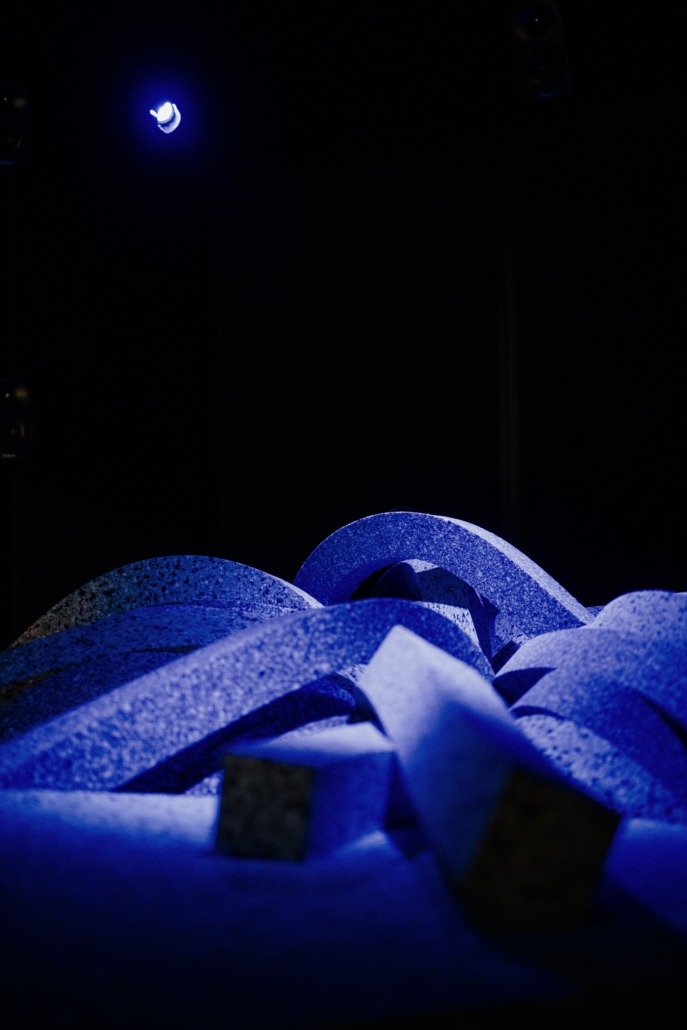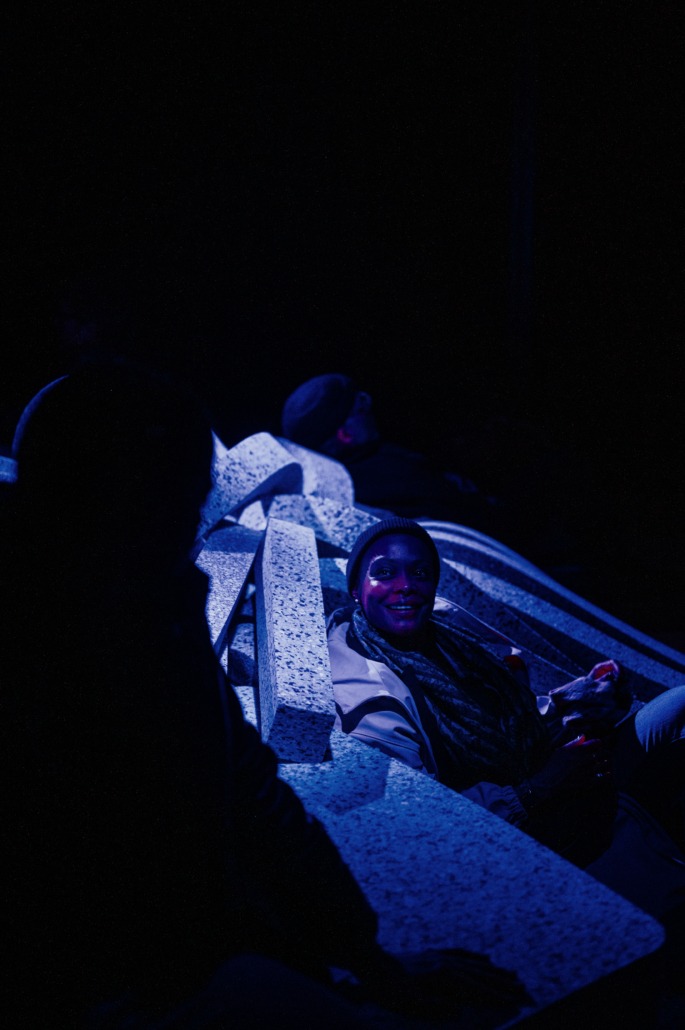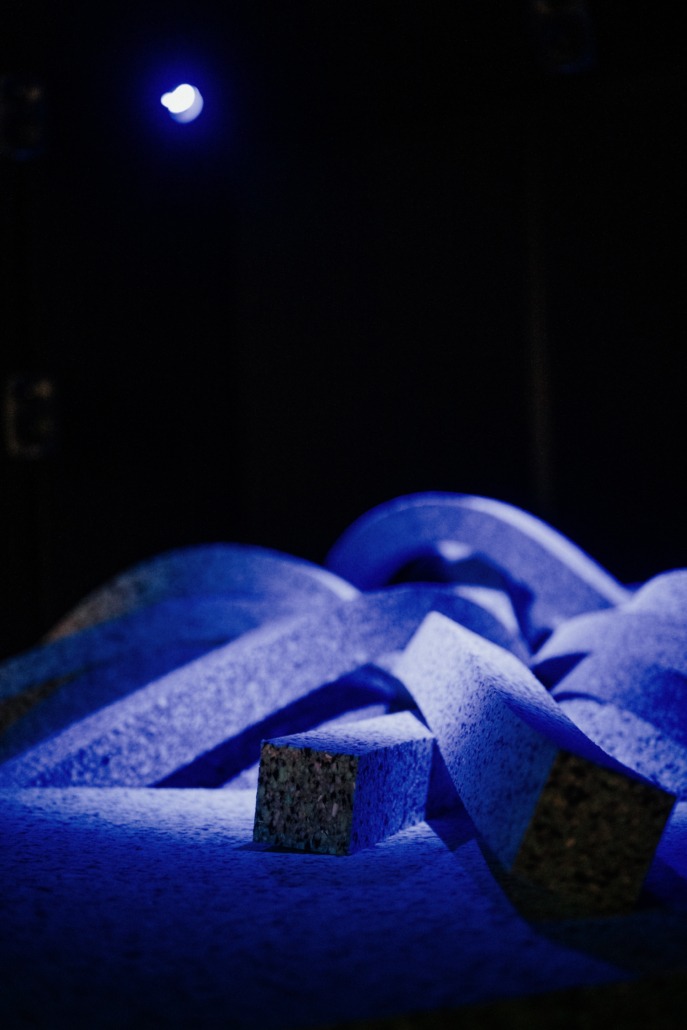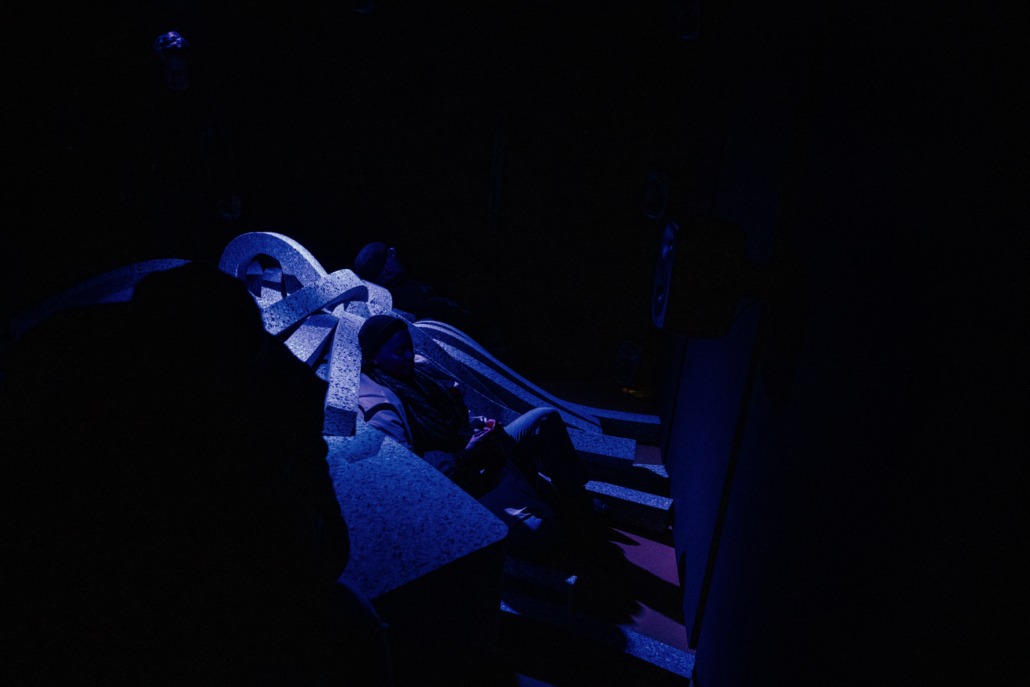‘Interferências no Tejo’, is an immersive sound installation that explores the balance between communication and the survival of the vocal species that live in the Tagus River. In this context, the exhibition space is converted into a ‘Lusitanian Toadfish nest’, where the public is invited to experience its acoustic and vibrational characteristics, immersed in an environment where the fish’s conversations are masked by anthropogenic noises. It alludes to the invisible impact of noise pollution, which disturbs the ecosystems of the Xarroco (Halobatrachus dydactilus) and the Corvina (Argyrosomus regius), two species investigated for this work. This sound composition is inspired by the underwater acoustic environment, focussing on pressure, vibration and particle motion.
The project «Interferências no Tejo» aims to amplify understanding of the often-overlooked impacts of noise pollution on water ecosystems, highlighting the tension between natural communication and invasive disturbances caused by human activities. Although these zones are often designed to protect populations of certain sensitive species, the fact that sound waves propagate without geographical limits renders these boundaries ineffective, reinforcing the need to reassess and progressively expand these territories to mitigate ecological impacts effectively.
Focus on vocal species from the Tagus river
This artistic project results from the Art & Science Residency ‘A Call to the Sea’, which took place at the Vasco da Gama Aquarium in 2024, in the municipality of Oeiras, under the European project Bauhaus of the Seas Sails, where CAM-Centro de Arte Moderna is the Cultural Partner.
Credits:
Artist – Francisca Rocha Gonçalves
Artistic team – Johannes Goessling, Kira Gama Rocha, Pedro Frade
Curatorship – Inês Valle
Speaker for the living – Paula Corte-Real
Zoöp Collaboration – Tagus River and species
Scientific Advisors & Contributors (Special collaboration): Maria Clara P. Amorim – Fish Bioacoustics Lab, Manuel Vieira and Paulo J. Fonseca – Fish Bioacoustics Lab, Miguel Lourie
Production – Matilde Neves
Support – Rita Fabiana
Photography & Video – Francisca Siza
Technical and lighting direction – João Cachulo, João Hora, Pedro Costa
Sound immersion spatialisation and composition support – Christian Dimpker
Other partnerships
MARE – Marine and Environmental Sciences Centre
ARNET – Aquatic Research Network
CE3C – Centre for Ecology, Evolution and Environmental Changes
CHANGE – Global Change and Sustainability Institute at Faculty of Sciences of the University of Lisbon.
Financial Support – European Union
Acknowledgements
Alexandra Vasconcelos, André Martins, Elisabete Brigadeiro, Francisca Siza, Tenente Francisco Calado, Johannes Goessling, Kira Gama Rocha, Marco Frade, Capitão de Fragata Maria Martins, Miguel Lourie, Capitão de Mar e Guerra Nuno Galhardo Leitão, Patrícia Chaves, Pedro Frade, Rafael Calado, Rui Macedo, Valentina Demarchi, Danceplanet, Elektranz, Soonora, Monopol (José e Salvador Burrel).
For more info check this link.
//
- Technique / Materials: spatialised sound installation / 19 Genelec speakers, 1 Meyer Sound Subwoofer, recycled foam, reused linoleum, 1 amplifier Fosi, 1 bass-shaker Dayton Audio.
- Software: SpatGris
- Dimensions: variable
- Date: 2025
- Location: CAM, Moder Art Center at Fundação Calouste Gulbenkian, Lisbon, Portugal.
©Fundação Gulbenkian_ Pedro Pina (Photography)










